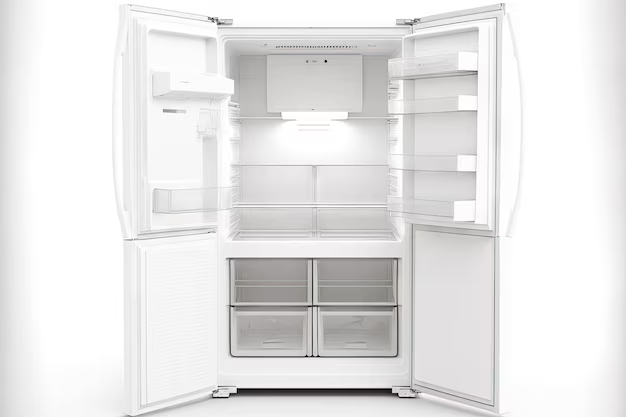Understanding Refrigerator Wattage: What You Need to Know
Ever wondered how much energy your refrigerator uses? Whether you're a homeowner looking to cut down on energy bills or simply curious, understanding the wattage of your fridge can help unravel this mystery. Refrigerators are one of the most essential appliances in any home, often running around the clock to keep food fresh. But what does that mean for your electricity usage? Let’s delve into the average wattage for a refrigerator and how it impacts your energy consumption.
🌀 Why Refrigerator Wattage Matters
Refrigerator wattage is crucial as it directly affects your electricity bill and environmental footprint. By understanding wattage, you can:
- Estimate energy consumption and identify cost-saving opportunities.
- Compare models when purchasing a new refrigerator.
- Plan electrical usage in your home efficiently, particularly when running multiple appliances.
Most refrigerators will mention two power-related specifications: wattage and annual energy consumption in kilowatt-hours (kWh). Wattage tells you the electricity demand at a given moment, while kWh represents energy use over time.
Typical Wattage for Refrigerators: A Closer Look
H3: Modern Standard Refrigerators
Standard refrigerators, often found in most homes, have varying wattage based on size and features:
- Compact refrigerators: These small fridges, perfect for dorms or offices, usually range between 100 to 300 watts.
- Mid-size refrigerators: Often found in smaller homes or apartments, typically range from 300 to 800 watts.
- Large refrigerators: Family-sized models with multiple compartments usually run between 800 to 1200 watts.
H3: Energy-Efficient Models
With increasing sustainability awareness, energy-efficient models offer similar cooling capabilities with reduced power demands. These refrigerators may consume 10% to 20% less energy than conventional models due to improved insulation, more efficient compressors, and defrost systems.
How to Calculate Refrigerator Energy Usage
H3: Wattage Calculation
To understand energy costs, you can calculate the energy use of your refrigerator using this formula:
[ ext{Energy (kWh)} = ext{Wattage (W)} imes ext{Hours Used (h)} div 1000 ]
For instance, a refrigerator rated at 800 watts running 24 hours will consume:
[ 800 imes 24 div 1000 = 19.2 ext{ kWh per day} ]
H3: Estimating Cost
To calculate the cost, multiply the energy consumption by your electricity rate. If your rate is $0.13 per kWh, the daily cost will be:
[ 19.2 imes 0.13 = $2.50 ext{ per day} ]
Multiply by 30 for a monthly estimate.
Factors Affecting Refrigerator Wattage
H3: Size and Design
Larger refrigerators naturally require more power. Additional features like ice dispensers, water filters, or smart technologies also increase energy demand.
H3: Temperature Setting
Settings play a significant role. A cooler setting demands more power as the compressor works harder to maintain lower temperatures.
H3: Usage Patterns
Opening the refrigerator frequently or overstocking it forces the refrigerator to work more, thus increasing wattage usage.
Practical Tips for Reducing Refrigerator Energy Use
Upgrade to Energy-Efficient Models: New models often have better insulation, require fewer defrost cycles, and have energy-saving modes.
Regular Maintenance: Keep the coils clean for efficient cooling and energy use.
Temperature Settings: Maintain optimal settings—37-40°F for the fridge and 0°F for the freezer.
Proper Organization: Avoid overloading your fridge to promote airflow, reducing energy strain.
Minimize Door Openings: Plan what you need before you open the fridge to maintain internal temperatures.
🤔 Common Questions About Refrigerator Wattage
H3: Does Energy Star Certification Affect Wattage?
Yes, Energy Star-certified models are built to meet efficiency guidelines, reducing electricity consumption compared to non-certified models.
H3: How Does Ambient Temperature Impact Energy Use?
High room temperatures can increase refrigerator energy demands. Consider positioning your fridge away from heat sources like stoves or direct sunlight.
H3: What’s the Lifespan Impact on Energy Efficiency?
As refrigerators age, components wear out, potentially reducing efficiency. Consider periodic checks or replacements every 10-15 years for optimal energy use.
📝 Key Takeaways
- Compact Fridges: 100-300 watts
- Mid-Size Fridges: 300-800 watts
- Large Fridges: 800-1200 watts
- Calculate Usage: Wattage × Hours Used ÷ 1000 = kWh
- Reduce Costs: Upgrade, maintain, set optimal temperatures, organize, minimize door opening.
By understanding these parameters and practices, you can make informed decisions to potentially lower your energy bills while contributing positively to environmental sustainability. Remember, small changes in energy habits can lead to significant savings over time. 🌱
